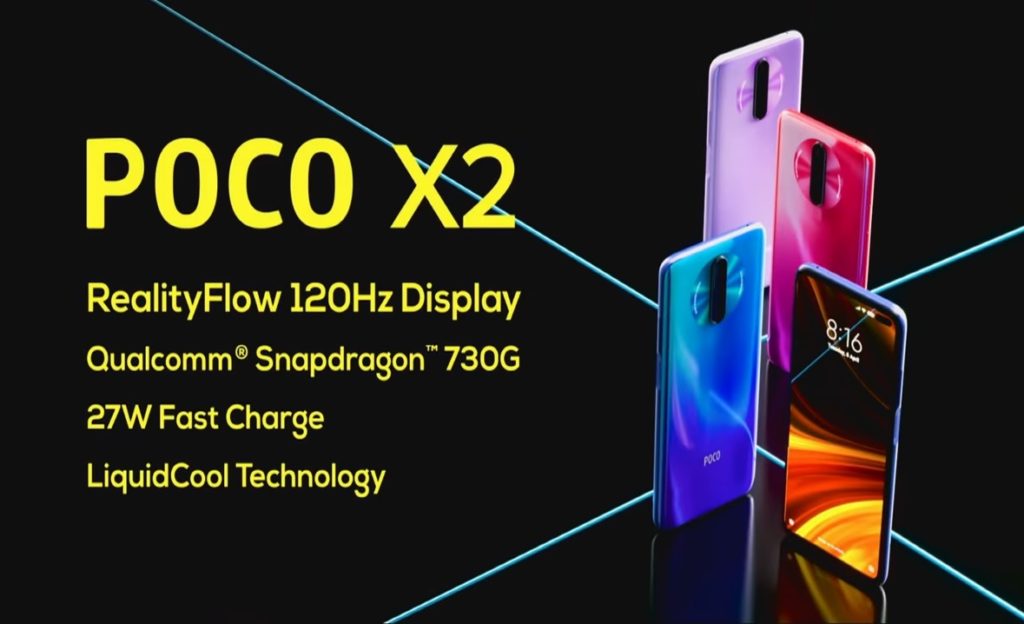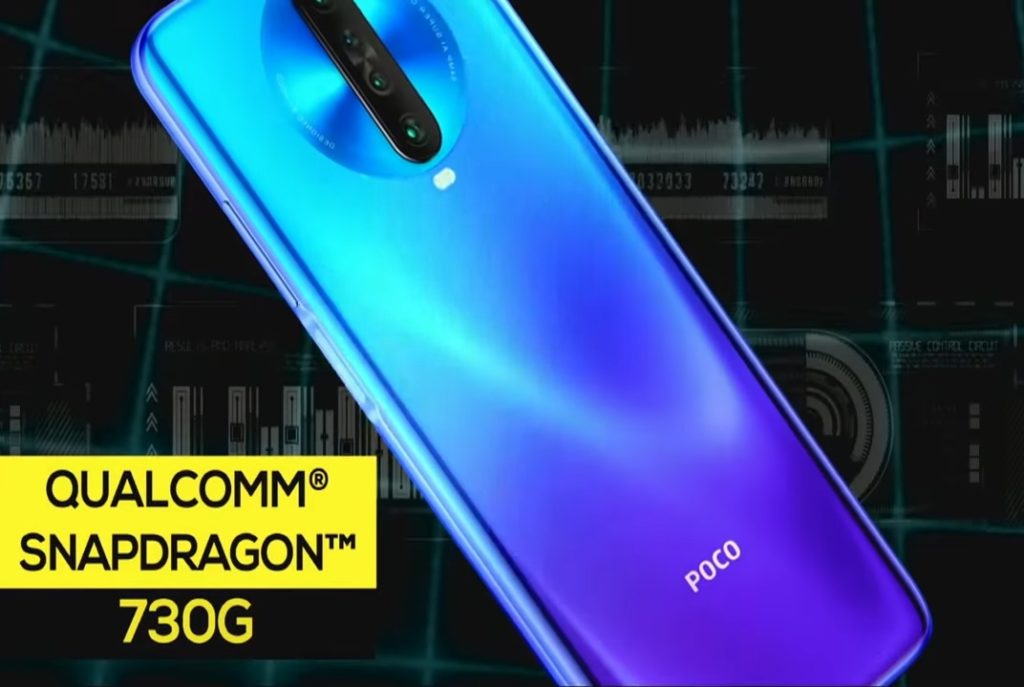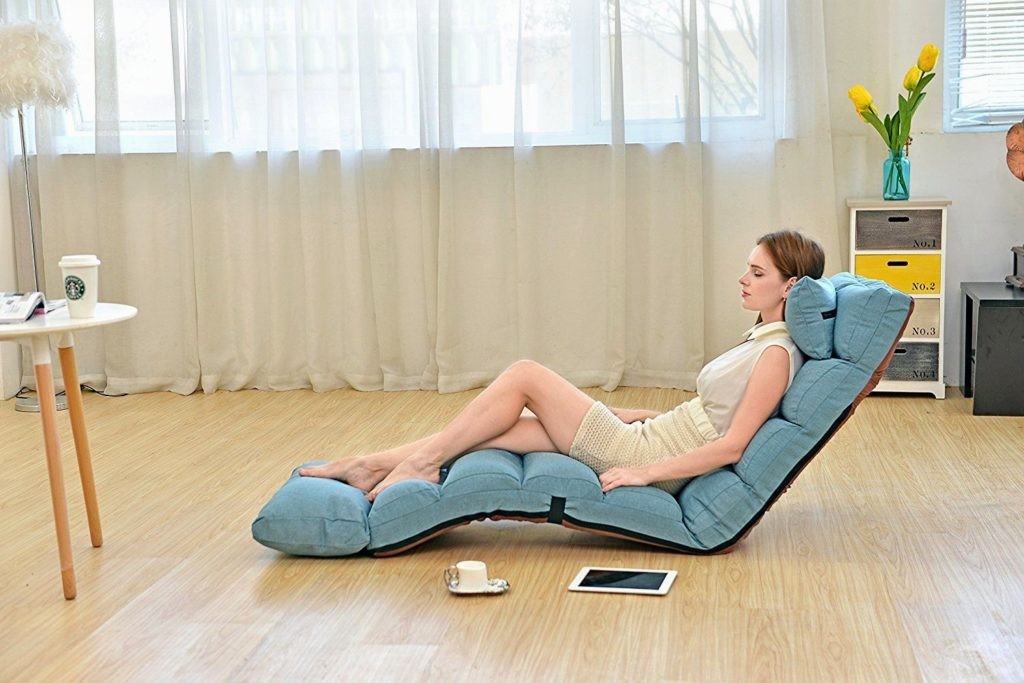Review of the smartphone Xiaomi Poco X2 with the main characteristics

Smartphones are everything. It is becoming more and more difficult to live without them in the modern world, but, fortunately, there is no shortage in the choice of models. It remains to find the very treasured gadget that will please the owner with its content and design. It also suits the price range.
Among the abundance of models of the modern smartphone market, Xiaomi brand products can be distinguished, and in particular the novelty - Xiaomi Poco X2, which has a stylish exterior, good content and reasonable price.
Read our review of the new Xiaomi Poco X2. We will tell you about the functionality of the model, its advantages, disadvantages and orient you on the price.
Content [Hide]
A little about the company

The Xiaomi company or “grain of rice” appeared in 2010, and in just a couple of years it came to success thanks to the work of a high-class IT specialist Lei Jun, who approached the matter pragmatically and achieved lightning popularity of his products by choosing an excellent team.
What is the secret to the success of the "grain of rice"?
Everything is pretty simple. Xiaomi is one of those who is bigger on the inside than on the outside.The management decided not to waste money from the budget, investing it in the design of branded salons. Fewer brand sections - more savings.
Also, the "rice grain" products come with a small margin, which makes the products attractive. People like to buy quality products from a reliable manufacturer at an affordable price.
As a result, consumers wrote a lot of positive reviews about the company, and every year Xiaomi becomes more and more popular.
About model

Having released the top model at the end of 2019 Mi Note 10 Pro, the company remembered that it was necessary to take care of filling the line of Poco devices with excellent performance. Obviously, it's all about the rivalry between manufacturers for the buyer's wallet. And Xiaomi decided to dilute the market with another subsidiary brand.
Many companies resort to this move, for example Huawei with their Honor brand, so there is nothing surprising here. Only the lazy did not release a smartphone with a camera resolution of 48 megapixels or more over the past year. So the Poco X2 has a 64 megapixel matrix. Let's see what else Xiaomi is ready to surprise in order to win the competition in relation to this model.
Characteristics
| Name | Parameter | Meaning |
|---|---|---|
| Net | Technology | GSM / HSPA / LTE |
| Release | Announcement | February 2020 |
| Status | The presentation is scheduled for February 13, 2020 | |
| Frame | Dimensions | 165.3 x 76.6 x 8.8mm |
| The weight | 208 grams | |
| Constructive | Front and rear surface - glass (Gorilla Glass 5), aluminum frame | |
| SIM cards | Hybrid Dual SIM (Nano-SIM) | |
| Splash protection | ||
| Screen | Type of | IPS LCD display with capacitive touchscreen, 16 million colors |
| Diagonal | 6.67 inches, 112.5 cm2 (~88.8% usable surface area) | |
| Permission | 1080 x 2400 pixels, 20:9 aspect ratio (pixel density per inch ~386 ppi) | |
| Protection | Corning Gorilla Glass 5 | |
| HDR10 | ||
| Screen refresh rate | 120Hz | |
| Brightness | 500 nits | |
| Platform | Operating system | Android 10.0 |
| Shell | MIUI 11 | |
| Chipset | Qualcomm SDM730 Snapdragon 730G (8nm) | |
| CPU | Octa core (2x2.2 GHz Kryo 470 Gold & 6x1.8 GHz Kryo 470 Silver) | |
| Graphics core | Adreno 618 | |
| Memory | Memory card slot | microSDXC (using a combined SIM card slot) |
| built-in | 64GB 6GB RAM, 128GB 6GB RAM, 256GB 8GB RAM | |
| File system | UFS 2.1 | |
| Main camera | quadro | 64 MP, f/1.9, 26mm (wide-angle), 1/1.7", 0.8µm, PDAF |
| 8 MP, f/2.2, 13mm (super wide), 1/4.0", 1.12µm | ||
| 2 MP, f/2.4, (macro camera), 1/5.0", 1.75µm | ||
| 2 MP, f/2.4, 1/5.0", 1.75µm, depth sensor | ||
| Additionally | Dual LED Flash, HDR, Panorama | |
| Video | , /120fps, ; gyro-EIS stabilization system | |
| Front-camera | Double | 20 MP, f/2.2, 27mm (wide), 1/3.4", 0.8µm |
| 2 MP, f/2.4, 1/5", 1.75µm, depth sensor | ||
| Additionally | HDR | |
| Video | ||
| Sound | speaker | Available |
| 3.5mm jack | Available | |
| DAC | 24-bit/192kHz | |
| Connections | WLAN | Wi-Fi 802.11 a/b/g/n/ac, dual-band, Wi-Fi Direct, hotspot |
| Bluetooth | 5.0, A2DP, LE | |
| GPS | Yes, with support for A-GPS, GLONASS, BDS systems | |
| infrared port | Available | |
| Radio | FM band, broadcast recording | |
| USB | 2.0, Type-C 1.0 reversible connector; USB On-The-Go system | |
| Additionally | Sensors | Fingerprint scanner (side-mounted), position sensor, compass, acceleration sensor, gyroscope |
| Battery | Non-removable Li-Po battery, 4500 mAh capacity | |
| Charger | 27W fast battery charger (100% in 68 minutes) | |
| Miscellaneous | Color | Blue, lilac, red |
| Model | MZB9011IN MZB9012IN MZB9013IN MZB8741IN MZB8742IN MZB8743IN MZB8744IN MZB8745IN MZB8746IN | |
| SAR Radiation Level | 1.08 W/kg (head) 0.62 W/kg (body) | |
| Price | About 200 euros |
Camera

So, as mentioned above, this device is a camera phone in its purest form. Everything here is geared towards getting high-quality photos and videos. The rear camera consists of four matrices for various applications and expansions, structurally combined into one block. This form factor migrated from the past year to 2020 and has become the de facto standard in the camera phone industry.
The developers considered it a reasonable decision to separate the matrices for their intended purpose, rather than using one universal one for all occasions. As a result, on Poco X2 we have:
- the main module is a wide-angle matrix with a resolution of 64 megapixels - the main "workhorse" in this model, supports a phase autofocus system;
- super wide-angle camera with a resolution of 8 megapixels;
- the third module with a resolution of 2 megapixels is designed for lovers of macro photography;
- the fourth module, also with a resolution of 2 megapixels, acts as a depth sensor for obtaining high-definition photos together with the main module.
Given that the cameras here are identical to those installed in the Xiaomi Redmi K30, we can safely judge the quality of the resulting photographic material. Thus, in bright sunlight, the pictures will be perfect. Lack of lighting will negatively affect the resulting photos. The geometric size of the matrix for a resolution of 64 megapixels is small and does not fully reject noise. The built-in flash, although designed to fight darkness, but its effect is achieved at a distance of no more than 3 meters.
For the front camera, the manufacturer decided to use a bunch of two modules, rightly judging that users need high-quality selfies. The main resolution is 20 MP and the second, used as a depth sensor, with a 2 MP matrix.
- cool main camera;
- dual selfie camera.
- weak flash.
Screen

The device is equipped with a 6.67-inch IPS LCD matrix. The decision not to put a display on the AMOLED model is due to the higher cost of the latter. Differences will be visible only in bright sunlight, IPS matrices fade, and the readability of information is reduced.
Display Resolution: 1080 x 2400 pixels, 20:9 aspect ratio. The density of pixels per inch, although not the highest today, is sufficient for comfortable viewing of content. The main feature is the screen refresh rate, which is 120 Hz. This significantly relieves eye strain in fast games, which favorably affects the well-being of users.
To make the device comfortable in the hand, the side frames were reduced as much as possible, but still the size makes itself felt. Users with small hands may experience discomfort when using the smartphone. A distinctive feature is the presence of an enlarged through cutout for the front camera. Where the symbol of a charged battery is usually located, a black hole now shines.
- display resolution;
- image refresh rate.
- IPS matrix;
- cutout for the front camera.
Filling

As in the prototype model Redmi K30, the manufacturer uses a bunch of Qualcomm SDM730 Snapdragon 730G octa-core processor and Adreno 618 video chip.This duet adequately showed its functionality not only in ordinary applications, but also in high-performance games. In order to cover the purchasing audience as much as possible, the Indians offer three configurations of the device:
- 64GB 6GB RAM - junior model;
- 128 GB 6 GB RAM - increased storage capacity;
- 256 GB 8 GB RAM is the older model.
And at the same time, each configuration will be produced in three different colors - blue, lilac or red.
To expand the built-in memory, there is a slot for a memory card. Unfortunately, this is a combined slot with a SIM card, so either additional space in the phone, or a second mobile operator. Of the wireless interfaces, the device is equipped with modules:
- Wi-Fi 11 a/b/g/n/ac, dual-band, Wi-Fi Direct, hotspot;
- Bluetooth version 5.0;
- NFC for contactless payments
- infrared port (only used as a remote control).

Unlocking the device is possible using a fingerprint scanner, which is located on the side face below the volume keys. On the bottom of the device are a 3.5 mm headphone jack, a USB 2.0 connector, a speaker grill and a microphone hole.
- fast processor;
- NFC module;
- 3.5mm jack.
- combined slot of SIM cards and memory;
- inconvenient location of the fingerprint scanner.
autonomy

Although there are minor flaws in relation to the screen, filling and design, it is absolutely impossible to find fault with the issue of powering the device. The smartphone has a 4500 mAh high-capacity battery. This volume is enough for a full two days of battery life. This implies that Wi-Fi will be turned on, and the owner will continuously surf the Internet and take pictures with the camera.And to shorten the “attachment to the outlet” time, a 27W charger is included. It is able to breathe life into a smartphone at 100% in just over an hour.
- large battery capacity;
- fast charger.
- not detected.
Price

Insider sources are voicing an approximate price for the older model with 256GB 8GB RAM on board - about 200 euros. So the Poco X2 seems to live up to its "flagship killer" moniker. Excellent equipment with the exception of minor flaws for a fairly humane price tag.
Conclusion
Xiaomi's decision to bring the Poco project into a separate brand is good news for all lovers of mobile technology. The X2 is the first product of the company's spin-off wing. Let it almost completely copy the Redmi K30, but the price tag is less.
In addition, the product from India already comes with a global firmware and it does not know the problems of localization from the Chinese language.
This smartphone is recommended for a closer acquaintance with all lovers of mobile innovations.
new entries
Categories
Useful
Popular Articles
-

Top ranking of the best and cheapest scooters up to 50cc in 2025
Views: 131656 -

Rating of the best soundproofing materials for an apartment in 2025
Views: 127696 -

Rating of cheap analogues of expensive medicines for flu and colds for 2025
Views: 124524 -

The best men's sneakers in 2025
Views: 124041 -

The Best Complex Vitamins in 2025
Views: 121944 -

Top ranking of the best smartwatches 2025 - price-quality ratio
Views: 114983 -

The best paint for gray hair - top rating 2025
Views: 113400 -

Ranking of the best wood paints for interior work in 2025
Views: 110325 -

Rating of the best spinning reels in 2025
Views: 105333 -

Ranking of the best sex dolls for men for 2025
Views: 104372 -

Ranking of the best action cameras from China in 2025
Views: 102221 -

The most effective calcium preparations for adults and children in 2025
Views: 102015









